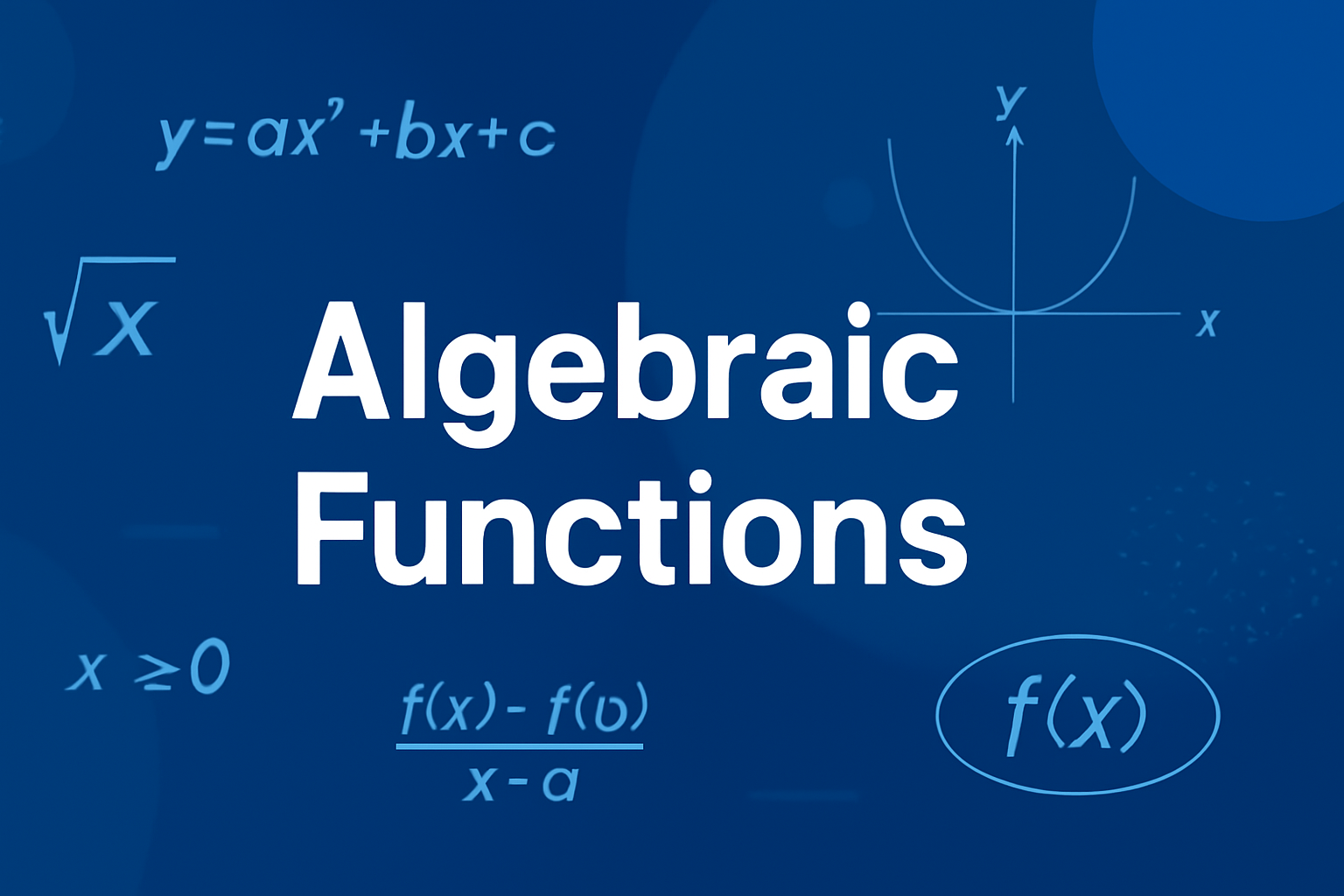Given the function,
\[
\begin{aligned}
y &= c, \quad \text{where } c \text{ is constant} \\
\frac{d}{dx} c &= 0 \\
\end{aligned}
\]
The derivative of any constant is zero.
\[
\begin{aligned}
y &= c \\
y + \Delta y &= c \\
\frac{\Delta y}{\Delta x} &= 0 \\
\\
\frac{dy}{dx} &= \lim\nolimits_{\Delta x \to 0} \frac{\Delta y}{\Delta x} = \lim\nolimits_{\Delta x \to 0} = 0 \\
\frac{d}{dx} c &= 0
\end{aligned}
\]
Given \( u \) and \( v \) as functions of \( x \), the derivative of a sum is,
\[
\begin{aligned}
y &= u + v \\
\frac{d}{dx} (u + v) &= \frac{du}{dx} + \frac{dv}{dx}
\end{aligned}
\]
The derivative of the sum of two functions is equal to the sum of their derivatives.
Proof:
\[
\begin{aligned}
y &= u + v \\
y + \Delta y &= u + \Delta u + v + \Delta v \\
\Delta y &= \Delta u + \Delta v \\
\frac{\Delta y}{\Delta x} &= \frac{\Delta u + \Delta v}{\Delta x} \\
\\
\frac{dy}{dx} &= \lim\nolimits_{\Delta x \to 0} \frac{\Delta y}{\Delta x} = \lim\nolimits_{\Delta x \to 0} \frac{(\Delta u + \Delta v)}{\Delta x} \\
\frac{dy}{dx} &= \frac{du}{dx} + \frac{dv}{dx}
\end{aligned}
\]
Given \( u \) and \( v \) as functions of \( x \), the derivative of a product is,
\[
\begin{aligned}
y &= uv \\
\frac{d}{dx} (uv) &= u \frac{dv}{dx} + v \frac{du}{dx}
\end{aligned}
\]
The derivative of the product of two functions is equal to the first function times the derivative of the second function plus the second function times the derivative of the first function.
Proof:
\[
\begin{aligned}
y &= uv \\
y + \Delta y &= (u + \Delta u)(v + \Delta v) \\
\Delta y &= v \Delta u + u \Delta v + \Delta u \Delta v \\
\frac{\Delta y}{\Delta x} &= \frac{v \Delta u + u \Delta v + \Delta u \Delta v}{\Delta x} \\
\\
\frac{dy}{dx} &= \lim\nolimits_{\Delta x \to 0} \frac{\Delta y}{\Delta x} = \lim\nolimits_{\Delta x \to 0} \left(\frac{v \Delta u + u \Delta v + \Delta u d v}{\Delta x}\right) \\
\frac{dy}{dx} &= u \frac{dv}{dx} + v \frac{du}{dx}
\end{aligned}
\]
Given \( u \) and \( v \) as a function of \( x \), the derivative of a quotient is,
\[
y = \frac{u}{v}
\]
\[
\frac{d}{dx} \left(\frac{u}{v}\right) = \frac{v \frac{du}{dx} - u \frac{dv}{dx}}{v^2}
\]
The derivative of the quotient of two functions is equal to the denominator times the derivative of the numerator minus the numerator times the derivative of the denominator all over the square of the denominator.
Proof:
\[
\begin{aligned}
y &= \frac{u}{v} \\
y + \Delta y &= \frac{u + \Delta u}{v + \Delta v} \\
\Delta y &= \frac{u + \Delta u}{v + \Delta v} - \frac{u}{v} \\
\Delta y &= \frac{v(u + \Delta u) - u(v + \Delta v)}{v(v + \Delta v)} \\
\Delta y &= \frac{v \Delta u - u \Delta v}{v^2 + v \Delta v} \\
\\
\frac{dy}{dx} &= \lim\nolimits_{\Delta x \to 0} \frac{\Delta y}{\Delta x} = \lim\nolimits_{\Delta x \to 0} \left(\frac{v \frac{\Delta u}{\Delta x} - u \frac{\Delta v}{\Delta x}}{v^2 + v \Delta v}\right) \\
\frac{dy}{dx} &= \frac{v \frac{du}{dx} - u \frac{dv}{dx}}{v^2}
\end{aligned}
\]
Given the function,
\[
y = x^n \quad \Rightarrow \quad \frac{dy}{dx} = nx^{n-1}
\]
This is the general power formula.
The derivative of a function raised to an integer is equal to the integer times the function raised to the integer minus one.
Proof:
\[
\begin{aligned}
y &= x^n \\
y + \Delta y &= (x + \Delta x)^n
\end{aligned}
\]
By Taylor’s Theorem, the expansion is
\[
\begin{aligned}
(x + \Delta x)^n &= x^n + nx^{n-1}(\Delta x) + \frac{n(n-1)}{2!} x^{n-2}(\Delta x)^2 + \cdots + (\Delta x)^n \\
y + \Delta y &= x^n + nx^{n-1}(\Delta x) + \frac{n(n-1)}{2!} x^{n-2}(\Delta x)^2 + \cdots + (\Delta x)^n \\
\Delta y &= nx^{n-1}(\Delta x) + \frac{n(n-1)}{2!} x^{n-2}(\Delta x)^2 + \cdots + (\Delta x)^n \\
\frac{\Delta y}{\Delta x} &= nx^{n-1} + \frac{n(n-1)}{2!} x^{n-2}(\Delta x) + \cdots + (\Delta x)^{n-1} \\
\\
\frac{dy}{dx} &= \lim\nolimits_{\Delta x \to 0} \frac{\Delta y}{\Delta x} = \lim\nolimits_{\Delta x \to 0} \left[ nx^{n-1} + \frac{n(n-1)}{2!} x^{n-2}(\Delta x) + \cdots + (\Delta x)^{n-1} \right] \\
\frac{dy}{dx} &= nx^{n-1}
\end{aligned}
\]
Lecture: Introduction and discussion on the basic derivative formulas.
Sample Problem 1-4: Derive the functions.
Lecture: Introduction and discussion on the chain rule.
Sample Problem 1-4: Differentiate the functions.
Lecture: Introduction and discussion on the higher order derivatives.
Sample Problem 1-4: Find the derivative.
Lecture: Introduction and discussion on the derivatives of implicit functions.
Sample Problem 1-3: Find 𝑦' of the equation .




